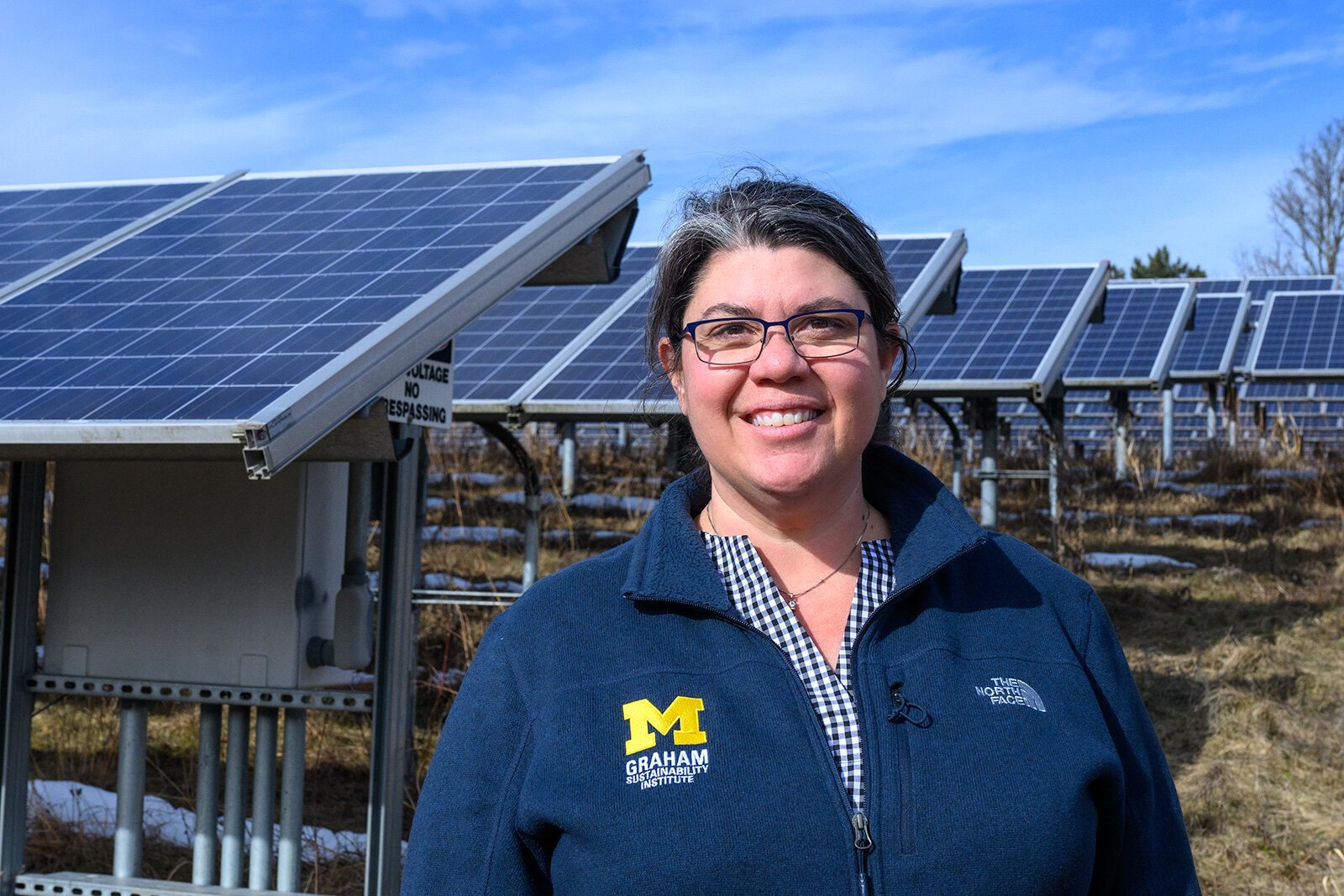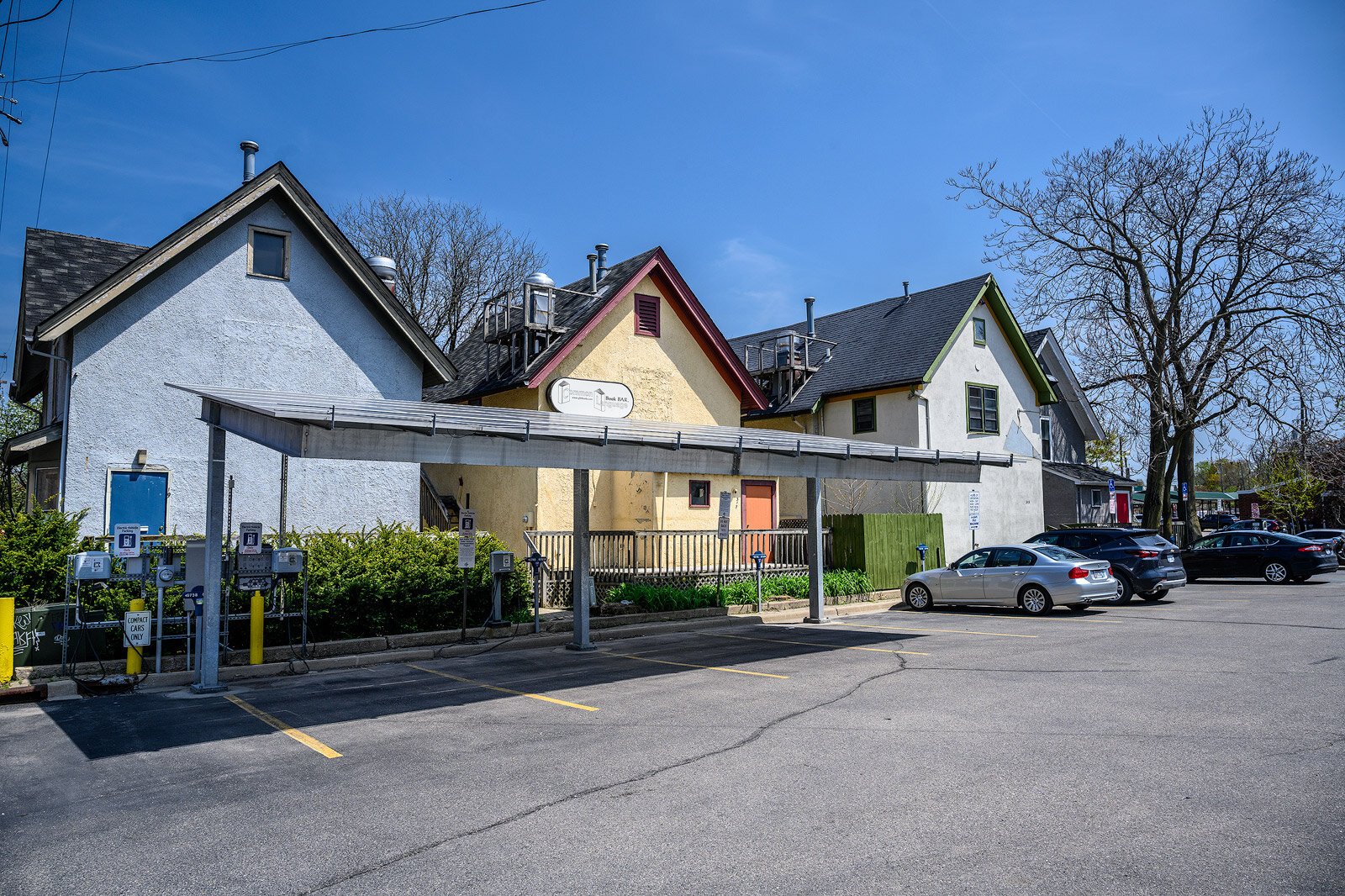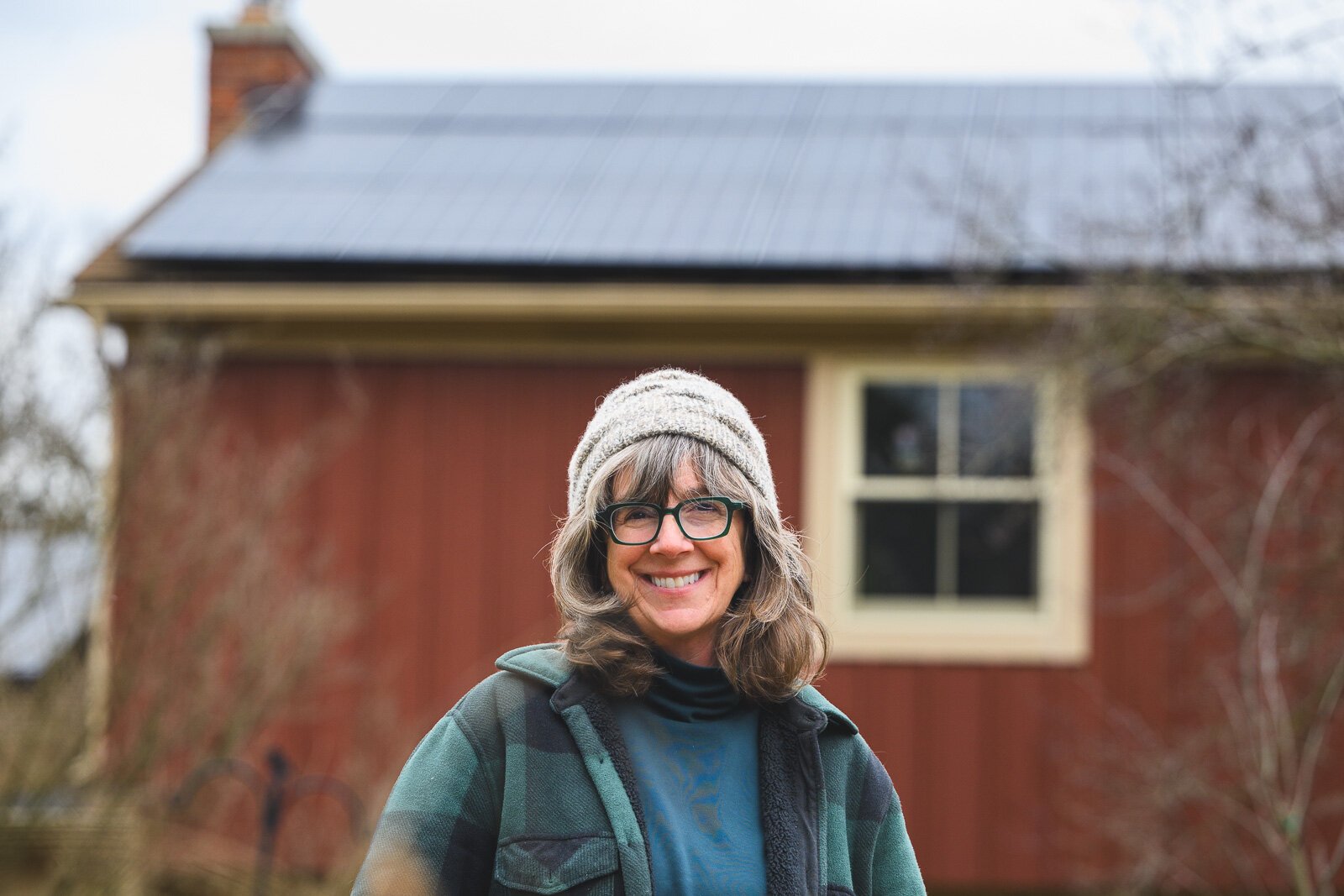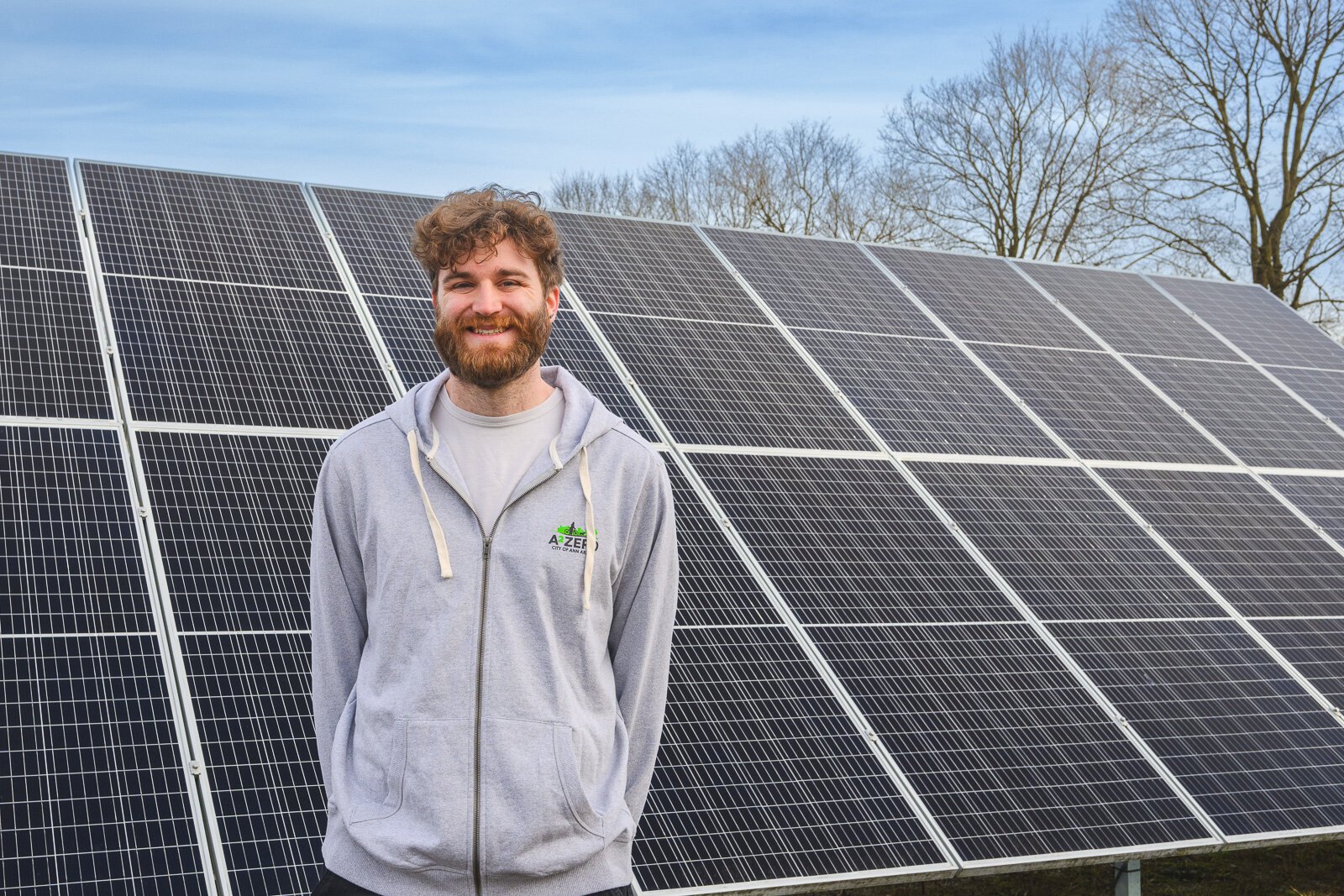“A Tupperware party for solar panels”: Ann Arbor bulk-buy program makes solar more affordable – Second Wave Michigan
In 2018, Ann Arbor resident Julie Roth vowed to take a break after two years of volunteering 20 hours a week. Then she attended an Ann Arbor District Library event about the latest Intergovernmental Panel on Climate Change report. Roth thought of her children.
“I just couldn’t even look at them and breathe at the same time anymore,” she says. “My next project had to be around climate change.”
Building on skills she honed working with Voters Not Politicians, Roth organized a meeting with friends and neighbors to organize bulk-buying solar panels for their homes. She expected few attendees and awkward silences. Instead, about 40 people crowded her living room, resulting in 12 solar panel installations.
“I didn’t know how significant this was,” she says.
But Ann Arbor city staff did. Ann Arbor has since adopted Roth’s bulk-buying model and offers it to anyone in Washtenaw County as Ann Arbor Solarize. The Solarize program helps residents organize with neighbors, friends, or strangers to learn about rooftop solar power. The city connects interested parties with local installers and enables groups to buy solar power equipment in bulk, saving money for everyone involved.
Joe Lange by solar panels at Northside Community Center in Ann Arbor.
Solarize is one of 44 projects enshrined in Ann Arbor’s A2ZERO plan. Joe Lange, an energy analyst for the city’s Office of Sustainability and Innovations, manages several of these projects, including Solarize.
“[A2ZERO] is our goal for equitably achieving carbon neutrality as a community by 2030,” he says.
The city has installed 300 kilowatts of solar panels to generate power for city facilities. Other programs help commercial and nonprofit properties install solar power systems.
University of Michigan researcher Sarah Mills, who works with the state Office of Climate and Energy to help Michigan municipalities navigate renewable energy improvements, describes Solarize and similar programs across the country as “a Tupperware party for solar panels.” The first such program started in Portland, Ore. in 2009. In 2016, the U.S. Department of Energy implemented a program called SolSmart to help local communities invest in solar power.
Lange says seven bulk-buy groups formed in Washtenaw County in 2023, and another is already in progress this year. According to city permitting data, 19 permits for residential solar installation have already been approved for this year. To date, residents have installed 4.5 megawatts of solar power on their homes with the help of Solarize.
Costs dropping dramatically
Solar power has been growing nationally as panels become more efficient and less expensive. On average, a residential solar power system costs $14,000 to $20,000 in Michigan. Local, state, and federal incentives chip away at that price. New systems qualify for a 30% tax credit under new incentives passed in the 2022 Inflation Reduction Act. With Solarize, residents receive a 15% discount for buying in bulk. Additional financing is available from Michigan Saves, a green bank that works with regional banks and credit unions to provide loans for home energy improvements.
Mills, Roth, and Lange all agree that the steep upfront cost is a sound investment.
“Solar panels pay for themselves,” Mills says. The cost of electricity purchased from utilities has steadily risen in the past few years as fossil fuels like natural gas and petroleum become more expensive. Producing power at home reduces the amount bought from the grid.
Eventually, solar power systems save a household more money in electricity costs than the initial cost of the system. On average, residents see a return on their investment in 10 to 13 years – about half the lifespan of most solar panels. Roth says that time will depend on several factors, including how much sun reaches the panels.
“The more productive the panels are, the quicker they pay themselves off,” she says.

 Sarah Mills in front of solar panels on U of M’s North Campus.
Sarah Mills in front of solar panels on U of M’s North Campus.
Homeowners who install a battery can store extra power generated on sunny days and use that power if the wider grid goes down, similar to a gas-powered generator.
Lange and Mills say a common misconception is that Michigan does not receive enough sunlight for solar power to be viable.
“Michigan winters tend to be pretty bleak and dreary,” Lange says. “So a lot of times people are like, ‘well, solar just doesn’t work here.'”
However, while Michigan is in the bottom 10 states for sunlight exposure, it still receives more rays than Germany, the world leader in solar power generation.
In addition, a solar power system raises a house’s value by 4-5% on average. And in Michigan, this won’t impact property taxes. In 2019, the state resurrected a tax exemption for solar power systems, meaning the value they add to the property won’t be taxed.
Still out of reach for many
But to reap these rewards, residents have to own their home and have cash on hand. Even with heavy discounts, a five-figure down payment is out of reach for many residents. Financing may not be possible for those with low credit scores.
“This is not an option for everybody, and there are equity concerns here as well,” Roth says. She says community solar programs offer a more equitable option.
In some states, residents who rent, can’t afford upfront costs, or whose houses aren’t compatible with solar power systems can invest in solar panels at a local installation off their property. Participants receive bill credits for the energy their solar panels produce. Such solar gardens belong to the community, rather than a utility. They can be installed on the roof of a school or in a public park.
“It’s just like owning it on your roof,” Roth says.
Community solar investments pay for themselves faster as well, because each household is making smaller investments in fewer panels. But state regulations prohibit this kind of program in Michigan. Residents can join programs like DTE’s MI Green Power, but Mills and Roth say it isn’t as equitable or cost-effective as the community solar model. For now, residents’ best option for investing in solar power is buying their own.
The appeal of solar power
Ann Arbor, known across the state as an eco-friendly “bubble,” seems like an outlier. Can other communities follow in Ann Arbor’s footsteps? Lange thinks so.
“I don’t think we’re unique, necessarily,” Lange says. “But we do have certain things going for us.”
Roth and Lange agree that Ann Arbor residents are more likely to support renewable energy initiatives. The city’s 2022 climate change millage passed with 71% of the vote.
“It’s a population that is really excited and primed to do this and tends to be very climate-oriented,” Roth says. The city’s goal for carbon neutrality is 10 to 20 years earlier than DTE’s, the state of Michigan’s, and the federal government’s. But Roth and Mills say climate change isn’t the only reason Americans go solar.

 Solar powered EV charging stations at 4th Avenue and Catherine Street in Ann Arbor.
Solar powered EV charging stations at 4th Avenue and Catherine Street in Ann Arbor.
“It’s not a partisan issue,” Mills says. “Self-reliance is something that lots of folks are behind.”
Other communities may also cite cost savings over reducing carbon emissions as a reason to invest in solar.
Mills says a major factor in Ann Arbor’s success is city staff. According to a study by the University of Michigan Center for Local, State and Urban Policy, only 1% of Michigan municipalities have staff whose primary focus is energy issues. Over 50% have no staff resources dedicated to energy issues at all.
“I think that that’s the big bottleneck,” she says, but having a paid city staff member overseeing the program removes several logistical barriers that prevent residents from organizing bulk buys.
Spreading the word
The city of Ann Arbor also provides a toolkit for other communities to start their own Solarize program.
“What I love about Ann Arbor’s program is that they did [Solarize], and then they created the tool kit so that other communities can do it,” Mills says.
The Great Lakes Renewable Energy Association, a nonprofit advocacy group focused on cost savings, has used this toolkit to support five more Solarize programs across Michigan.
Other groups are fighting for legislation that would allow Michigan municipalities to create community solar gardens. A bipartisan coalition introduced four bills in March 2023 that would pave the way for this change – including reserving at least 30% of power generated for low-income communities. The bills have been referred to the Senate Energy and Environment Committee.

 Julie Roth outside her solar panel equipped home.
Julie Roth outside her solar panel equipped home.
After helming Solarize, Roth switched careers from health care to managing the energy team at the city’s sustainability office. She says she has enjoyed watching the program blossom.
“The thing that’s been the most fun for me is the ripple effect,” she says. “It makes you realize that you can do so much more than just your own little footprint.”
Lange credits residents with making the program so successful.
“We’re trying to get 100% renewable energy in the community,” Lange says. “But I think [what’s] just as important is connecting people.”
Elinor Epperson is a freelance journalist based in Ypsilanti. She is currently pursuing a master’s degree in journalism at Michigan State University, focusing on environmental, health, and science reporting.
All photos by Doug Coombe.


